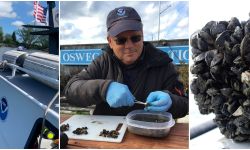Michigan found PFAS in Oscoda in 2010. There’s still no plan to clean it up.
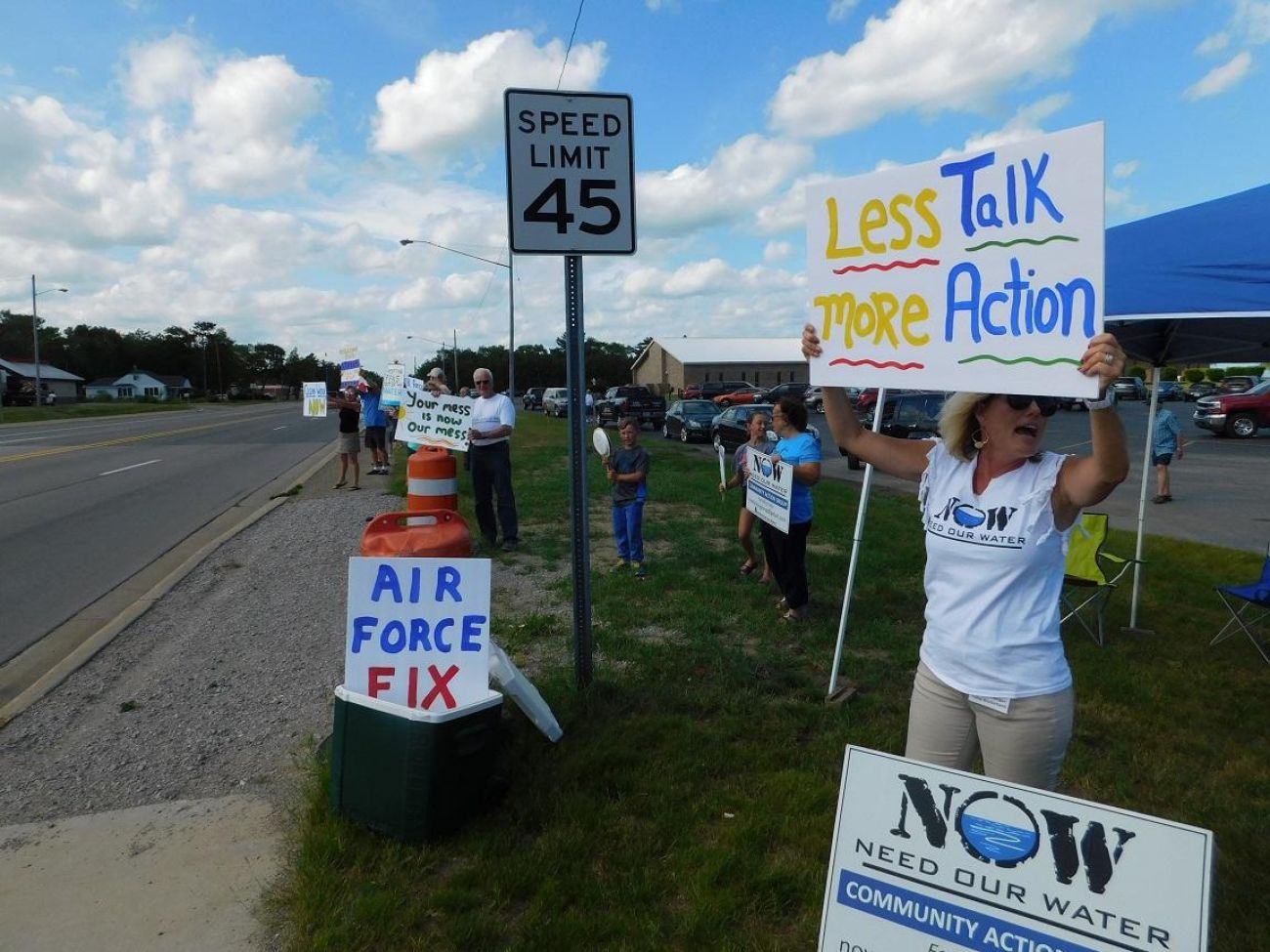
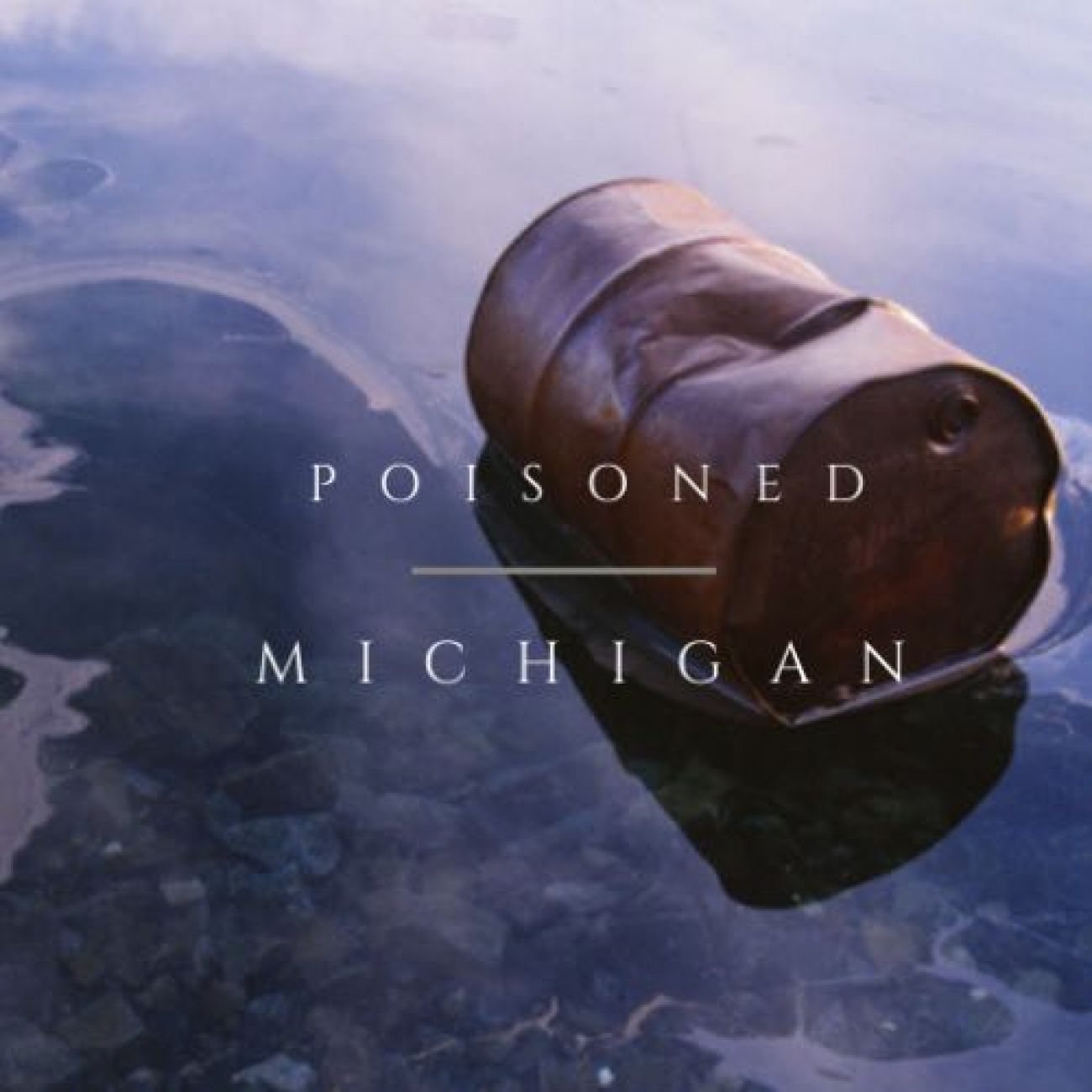
OSCODA — For summer after summer, Greg and Vicky Cole had no trouble renting out their three cottages along Van Etten Lake — a place for tourists to catch perch, northern pike and walleye and behold a northeast Michigan sunset.
“I had to turn people away,” Greg Cole said.
But the cabins sat empty just before Labor Day this year as the couple looked for renters. The Coles are among 600 residents who live at least part time along Van Etten Lake, which drains into the Au Sable River and Lake Huron — an area state tourism officials tout as a slice of “Pure Michigan.” But fewer folks are visiting these days, Cole said, and “For Sale” signs are popping up around the lake far more frequently.
That’s reality in Oscoda Township, population 6,900, where toxic chemicals from the shuttered Wurtsmith Air Force Base have threatened public health and tainted the community’s reputation.
Known as PFAS, the chemicals from firefighting foam airmen once sprayed liberally on the base are oozing into Van Etten Lake, the Au Sable River and Clark’s Marsh — a key stopover for migrating waterfowl. The state has warned more than 200 homeowners not to drink from their private wells (the local health department has provided in-home filters or water coolers instead) and advised against consuming certain fish and deer.
Toxic foam occasionally bubbles atop Van Etten Lake’s waters, offering a visual reminder of the crisis that otherwise hides underground.
Oscoda is one of dozens of Michigan communities grappling with PFAS, chemicals found in many household products and linked to cancer, developmental problems, thyroid disease among other ailments. But the town has played a special role in the state’s discovery of the problem. This is where Robert Delaney, a state geoscientist, first detected widespread contamination from the “forever chemicals” in 2010 and pushed for statewide actions for years before that happened.
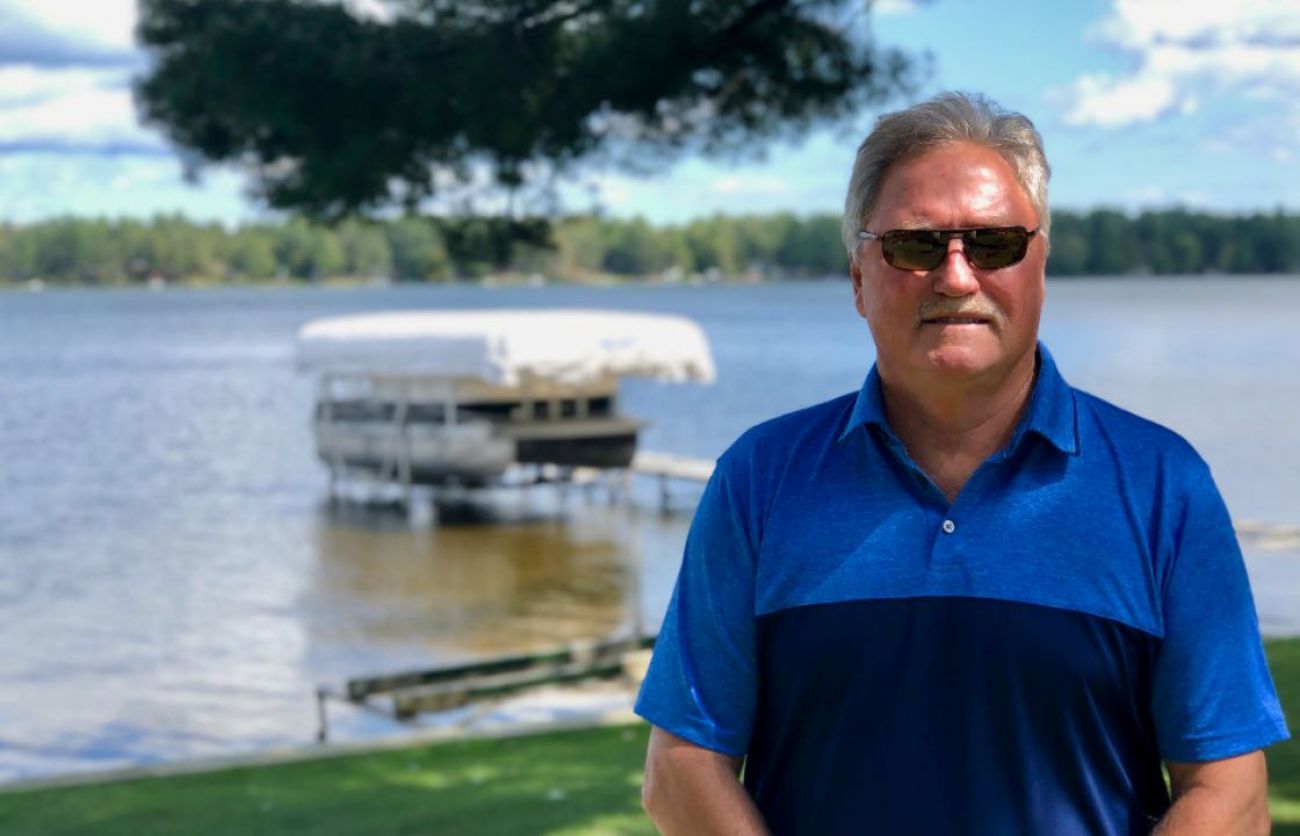
Nearly a decade later, Michigan is two years into a statewide effort to detect and regulate PFAS — drawing praise from some experts and environmentalists. But Oscodans feel left behind. The Air Force has yet to offer a final plan for thwarting the chemical plume’s advances, and it won’t say when that might come. Meanwhile, Oscoda leaders say state regulators and are doing too little hold the Air Force accountable.
The Michigan Department of Environmental, Great Lakes and Energy (EGLE) has accused the Air Force of violating state cleanup laws in Oscoda. But two years of legal negotiations have yielded little more than an informal agreement that the Air Force will take small steps it already planned to take.
The Air Force denies responsibility for some of Oscoda’s pollution, which has spread to 8 square miles of groundwater. State law doesn’t necessarily apply to the military, the Air Force argues. Instead, the department must follow a federal Superfund law — called CERCLA — that begins with a lengthy review of whether state standards apply.
“The Air Force will grasp at anything to try and keep from doing what they need to do here, and the state is letting them get away with it,” said Aaron Weed, Oscoda Township’s elected supervisor who previously spent 22 years in the Air Force, managing budgets and leading aircraft crews in a career that took him to several states.
“As long as the Air Force is unwilling to do anything about this, I’m saying this is an intentional poisoning of the American people.”
The episode echoes Michigan’s chemical-tainted past.
It’s Oscoda’s second major pollution tangle with the Air Force, and it comes as residents of St. Louis, Michigan, are still watchdogging the cleanup of a chemical plant that was Ground Zero for one of the largest mass poisonings in American history: the 1973 mixup of cattle feed and the fire retardant PBB, which contaminated the state’s dairy and meat supplies and triggered the slaughter of 23,000 heads of cattle and 1.5 million chickens and other livestock.
The stories in Oscoda and St. Louis feature key differences, including the polluters responsible: the federal government versus a long-bankrupt chemical company. But parallels in each community — investigations and cleanups inching forward in a maze of state and federal bureaucracy, delaying relief — raise questions about how much government officials have learned from the past.
“With PBB, it was almost forgivable. Fool me once, it’s your fault. Fool me twice, it’s my fault,” said Delaney. “Here we are again, the same thing. We have so much more technology, so much more knowledge, but we’re in the same situation.”
History of pollution
Oscoda’s identity wasn’t always tied to tourism. From 1923-1993, the town represented American military might. Named for Detroit-born World War II pilot Maj. Gen. Paul Bernard Wurtsmith, the Air Force base served key roles in several wars and housed nuclear-armed B-52 bombers during the Cold War. A 1990 Detroit News story described Catholic nuns praying daily outside the base for the world to avoid nuclear Armageddon.
Throughout much of that history, airmen focused little on safely disposing jet fuel, degreasing compounds and other chemicals that kept the base running.
By the 1970s, base residents complained of foul-smelling drinking water. State regulators discovered that trichloroethylene (TCE), benzene and other harmful compounds had tainted 4 square miles of groundwater, infiltrating drinking water wells. In 1979, Michigan Attorney General Frank Kelley sued the U.S. Environmental Protection Agency, accusing it of “doing virtually nothing” to ensure the Air Force cleaned what he called “an imminent threat to Van Etten Creek, Van Etten Lake and Lake Huron.”
Fool me once, it’s your fault. Fool me twice, it’s my fault. Here we are again, the same thing. We have so much more technology, so much more knowledge, but we’re in the same situation.”
– Robert Delaney, a geoscientist with the State of Michigan
Michigan and the United States settled that lawsuit in 1980. The Air Force agreed to clean the mess within a year and pay Michigan a $100,000 fine, according to news accounts from the time. But Kelley returned to court three years later, accusing the Air Force of flouting the agreement, while the chemicals kept spreading.
Only in the 1990s did the Air Force pay to hook up TCE-affected residents to municipal water, but smaller pollution squabbles persisted at Wurtsmith.
In 2010, Delaney, a geologist and Superfund specialist for the since-renamed Department of Environmental Quality, thought he was poised to close the book on one such contamination problem. He had spent 15 years serving the state and Wurtsmith, part of that time focusing on a firefighting training area. There, crews in Wurtsmith’s heyday would pour jet fuel on the ground, set it ablaze and practice extinguishing the fire with soapy foam. Delaney mostly worried about contamination from the fuel.
“Finally, after all those years, the Air Force had agreed to do the remedy that we believed would work,” Delaney recounted to Bridge Magazine, adding that he was speaking as a citizen and not a state employee.
But he would soon learn about a far more serious problem lurking beneath the base. That began in March 2010 when he flew to Florida for a conference of fellow state cleanup specialists. An expert spoke to Delaney and his colleagues about hazardous chemicals found in firefighting foams used widely across military bases: PFAS, or per- and polyfluoroalkyl substances, sometimes called “forever chemicals” because they’re essentially indestructible.
During the conference, Delaney’s consultant in Oscoda reported crews had uncovered mysterious black soil around Wurtsmith’s fire-training area. Tests would later show high levels of PFAS — still lingering 17 years after the base closed. Further tests detected PFAS in the groundwater, too.

Delaney poured himself into researching PFAS, and what he found shook him to the core. The chemicals were abundant in and around Wurtsmith and likely statewide. That’s because they were used to manufacture all kinds of non-stick and stain-resistant products aside from firefighting foam. The most studied types of PFAS proved hazardous at extremely low thresholds, measured in parts per trillion, the equivalent of a grain of sand in an Olympic-size swimming pool, Delaney learned.
“I began to feel that I was at the edge of the abyss looking into hell and the weight of the world was on my shoulders,” Delaney testified at a hearing last year organized by U.S. Sen. Gary Peters.
By December 2010, Delaney said he laid out his concerns to upper management. Jim Sygo, the DEQ’s deputy director at the time, set up a task force of toxicologists, engineers and Delaney to consider PFAS threats in Michigan. In a 2011 white paper, the group recommended “a limited sampling program” of fish and surface water for PFAS to determine whether the Wurtsmith contamination represented a “worst-case scenario” for the state.

Through 2012, the state tested fish around Oscoda and a handful of other places into 2012, issuing a “do not eat the fish” in Clark’s Marsh — the first around Oscoda.
But Delaney thought that response was doing too little for a problem that could harm public health across the state. In 2012, he teamed with Richard DeGrandchamp, a toxicology and epidemiology professor at the University of Colorado. They wrote a 93-page report to then-DEQ Director Dan Wyant called “Michigan’s Contaminant Induced Human Health Crisis: Addressing Michigan’s Future By Facing the Challenge of the Evolving Nature of Environmental Contamination,” offering a host of recommendations, including testing drinking water statewide.
Michigan sampled more fish and surface water beginning in 2013. The tests led to more fish advisories — this time in the Flint River and Rogue River in Rockford in west Michigan. But Delaney said he never heard a response to his report from Wyant, who resigned in 2015 amid Flint’s lead-in-water crisis.
By late 2017, some of Delaney’s colleagues faced criminal charges related to the Flint scandal, and he feared a similar fate if he did not go public with his PFAS concerns, he said.
“If they started to look and see who brought this up first — like the Flint situation, they’re going to come back to me,” Delaney told Bridge.

He turned to Steve Gruber, a syndicated conservative radio host based in Lansing. Sitting alongside his attorney, Delaney aired his concerns on Gruber’s program in October 2017.
Just weeks after the interview, then-Gov. Rick Snyder launched a multi-agency “Michigan PFAS Action Response Team (MPART) and the Legislature approved more than $23 million related to PFAS a month later. The state soon started testing all public water systems for PFAS. Michigan sued Wolverine World Wide, the maker of Hush Puppies shoes, following revelations that PFAS leached from the dumping sites in Kent County. The statewide response escalated in Snyder’s final year and as Whitmer settled in to succeed him. Whitmer has proposed a drinking water standard for seven types of PFAS — science-based regulations drinking water providers must meet.
EGLE is now investigating PFAS-contaminated groundwater at 67 sites in 34 counties, and testing data show at least trace amounts of PFAS in more than 100 public water systems.
Delaney said he almost can’t believe the state’s newfound aggressiveness on PFAS following the years of little action.
“Michigan has decided now to really take off, and we’re doing a lot of great stuff,” he said.
But it’s unfortunate, Delaney added, that state and federal regulators hadn’t learned enough from previous environmental crises to prevent the spread of PFAS before the public understood its dangers.
“PFAS demonstrates that our laws failed us. They’re not adequate to protect us.”
Heidi Grether, DEQ director from 2016-2018, told Bridge she knew nothing of Delaney’s report until the scientist discussed it on the radio. “It raised good questions,” but it was “just once piece of a broader puzzle” that prompted Snyder’s administration to take PFAS seriously, she told Bridge.
Hindsight might suggest Michigan should have fully responded to PFAS earlier, Grether said. But she noted that scientists knew less about the chemicals’ dangers early on and the Legislature had given her agency limited resources to respond to known — and unknown — environmental hazards.
“If you do that, what are you not going to do?,” she said about investigating PFAS.
Echoes from the past
Delaney’s push for Michigan to take PFAS seriously sounds familiar to Edie Clark, who played a behind-the-scenes role in bringing to light the full scope of Michigan’s PBB crisis during the 1970s. Clark was a staffer for Democratic House Speaker Bobby Crim at a time a Michigan leaders slowly responded to the 1973 error at the St. Louis chemical plant that sent the toxic fire retardant to the Michigan Farm Bureau feed center, where it was distributed statewide.
A federal scientist didn’t flag the PBB contamination for nearly a year, and state and regulators spent years downplaying the scope of the problem — initially contending it affected just a few farms and didn’t threaten public health. And the federal regulators were largely absent.
“The handling of the situation was nobody’s task,” Joyce Egginton wrote in her 1980 book “The Poisoning of Michigan.” “The federal authorities had deemed PBB to be Michigan’s problem — which left state agencies to do the best they could with no outside support, no extra funding, no experience in chemical contamination, no comprehension of the disaster's enormity.”
Sitting in a series of legislative hearings in the mid-1970s, Clark was moved by testimony from Michigan farmers who detailed their woes: livestock getting sick and dying — or just not knowing whether it was safe to sell their products.
“They spoke the truth,” Clark told Bridge. “There was an incredible story — and incredible information that they were bringing into the Michigan Legislature. They just couldn't find anybody to pay any attention.”
Amid the saga, Clark learned that Dr. Irving Selikoff, a pioneering cancer researcher at the Mount Sinai Medical Center in New York, was interested in coming to Michigan to study how PBB affected human health, but only if state leaders invited him. The Michigan Department of Agriculture and at least one staffer in Gov. William Milliken’s office knew about the standing offer, but never issued an invitation.
Clark persuaded Crim to formally invite Selikoff, whose research linking illnesses to PBB built public pressure for action.
Only in 1977 did the Michigan Legislature, over staunch objections from the closely linked Michigan Department of Agriculture and Michigan Farm Bureau, dramatically lower the allowable amount of PBB in state food supplies.
“The longer they waited, the more expensive it became, and the more animals they had to destroy,” Dr. Thomas Corbett, a University of Michigan anesthesiologist involved in the case, told Bridge.
Today, an estimated 60 percent of Michiganders have elevated levels of PBB in their system, according to Emory University researchers. And ground zero of the PBB crisis isn’t yet cleaned up. Residents of St. Louis, home to the Michigan Chemical Corp. plant that manufactured PBB and other toxic chemicals like DDT, are still watchdogging a cleanup of the site expected to cost $500 million. And residents are still advised not to eat the fish from the Pine River due to pollution that leaked from the plant.
Clark, who quit politics in disgust and pursued a career in public health, said Michigan should now be “laser-focused” on PFAS but also think more broadly about hazardous chemicals.
“We need to use it as a flashing red-light for examining our relationship with toxic substances,” she said.
Stuck on the runway Back in Oscoda, the Air Force cleanup also appears stuck on the runway, and EGLE is proceeding without Delaney as the project’s lead.
“The longer they waited, the more expensive it became, and the more animals they had to destroy.”
– Dr. Thomas Corbett, a University of Michigan anesthesiologist remembering the state’s PBB contamination crisis in the 1970s.
This summer, he asked his bosses to take him off the project, and they obliged. After being perceived as a PFAS whistleblower “it was just untenable” to continue his previous role in Oscoda,” Delaney said, adding that his public testimony fueled distrust at work.
“I didn’t feel like I'm really part of a team. And that feeling leads to stress,” he said.
Delaney told Bridge it was his choice to leave the project, and he’s “more comfortable at work than he’s been in a long time.” Some activists in Oscoda are convinced he was pushed out. “When you pull back and look at the big picture, you have a person in Bob Delaney who knows more about Oscoda than anyone on the planet,” said Anthony Spaniola, a Troy attorney who owns a cottage on Van Etten Lake and an advocate for action on PFAS across the state. “The fact that he’s not on that project any more is unconscionable.”
Scott Dean, an EGLE spokesman, would not comment on the personnel matter.
The Air Force and state are locked into a formal “dispute resolution” negotiations. The state is calling on the Air Force to accept responsibility for more of the pollution flowing from Wurtsmith, offer a plan for “final remedial actions” and to hookup affected residents to safe drinking water. The Air Force has installed two “granular activated carbon” systems to capture and filter groundwater from Wurtsmith, but state regulators say many more are needed to thwart the PFAS plumes. Now, no system is treating the water that’s traveling directly into Van Etten Lake and foaming up the beaches.
Malcolm McClendon, an Air Force spokesman, said Department of Defense cleanup policies mostly emphasize drinking water.
“The Air Force’s first priority is protecting human drinking water because drinking water is a direct pathway to human consumption,” he said.
EGLE, the environmental agency, accuses the Air Force of violating the state’s 12-parts per trillion standard for PFOS (one type of PFAS) entering Clark’s Marsh, with levels as high as 6,240 parts per trillion.
But the Air Force counters that Michigan regulations don’t necessarily apply to military cleanups, in part because the EPA has yet to define the PFAS as “hazardous substances.” In July, the EGLE touted a verbal deal with the Air Force that, a news release said would “accelerate” the investigation. Among a few other actions, the Air Force agreed to:
- Install a third treatment system to treat contaminated water flowing into Van Etten Creek.
- Submit an “Expanded Site Inspection” report to EGLE by the end of 2019 that would “evaluate the effectiveness of existing interim remedial action” treatment and implement a “basewide” investigation after that.
- Consider whether Michigan’s cleanup standards “are legally applicable” when eventually designing remediation.
- “Review the possibility” of addressing the contamination flowing into Van Etten Lake.
Oscodans panned the agreement as weak, saying it falsely suggested Michigan and the Air Force are making progress.
McClendon acknowledged the agreement “does not commit the Air Force to any actions that were not already planned,” nor is it legally binding. But “it does present a commitment by both agencies to work cooperatively to move forward,” he said.
Aware of residents’ frustration, Michigan regulators told Bridge the agreement would publically hold the Air Force to deadlines outlined in the news release. It was the next best thing to a signed memorandum, which the Air Force wouldn’t pursue, said Sliver, the Michigan PFAS Action Response Team executive director.
“We see that it's positive — that there's acknowledgement of some commitments on the part of the military to follow state standards and step up the pace,” he said. Meanwhile, Sliver added, all options — including legal action remain on the table.
McClendon would not offer a guess at when Oscodans would see a final cleanup plan under, citing a host of complications including “uncertainty related to the development of different regulatory standards, both at the federal and state level.”
Such language doesn’t assure folks in Oscoda.
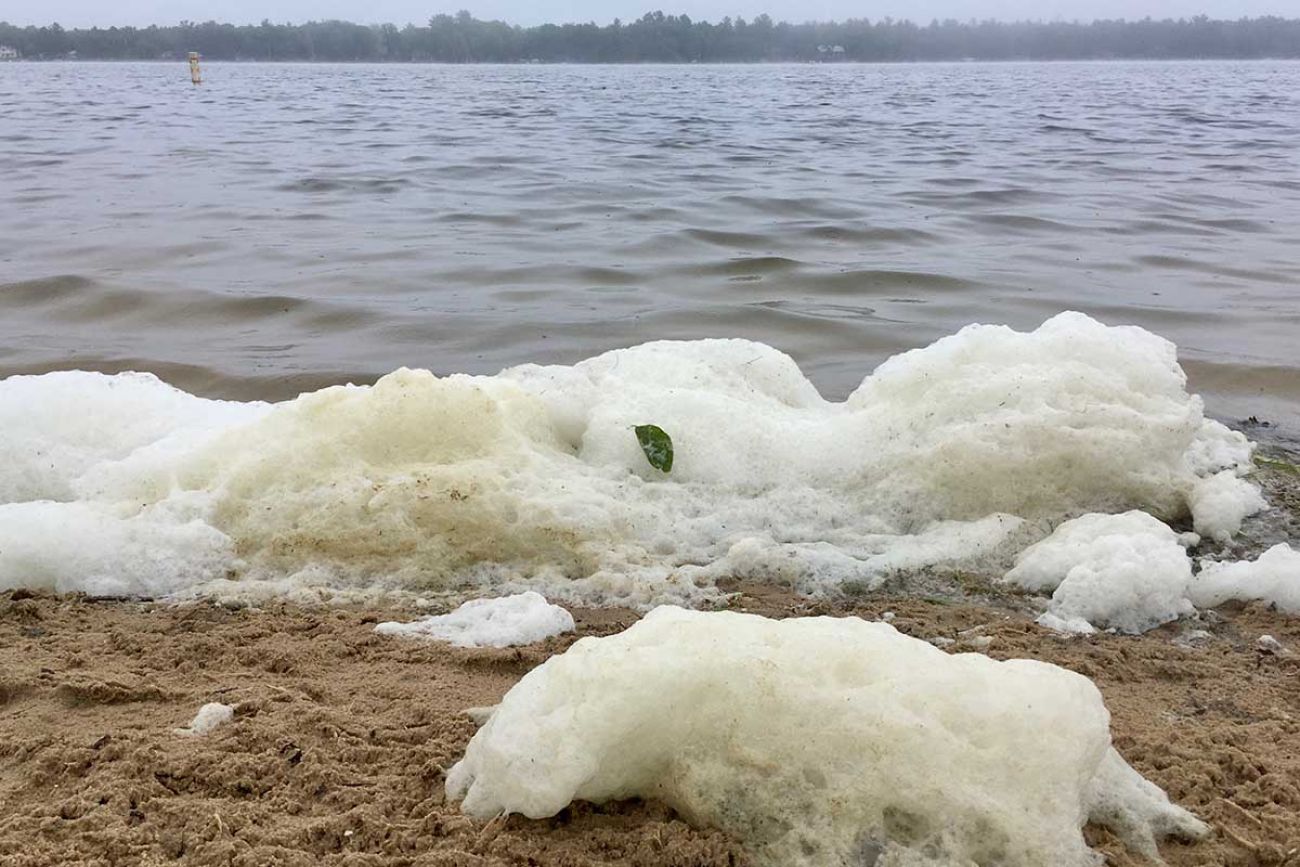
“The main thing that the residents here are concerned about is not whether they’re doing something — it’s the time frame they’re intending to do it in,” said Bob Palmer, an Oscoda Township trustee. He spoke from the dining room of his Van Etten Lake home, which sits atop one of the “hottest” parts of the PFAS plume flowing from Wurtsmith and foaming up the lake.
“They’re talking 30, 40 years at the rate they’re going,” Palmer said of the Air Force’s cleanup plans. “Most of us won’t be here then.”
If the Air Force declines to cooperate, it’s not clear how willing Attorney General Dana Nessel might be to force the issue in a lawsuit — like Kelley did in the 1970s.
Asked about her appetite for such a move, Nessel’s spokeswoman highlighted the challenges of overcoming the Air Force’s arguments — that it’s immune from state law and that Washington has yet to regulate PFAS as “hazardous.”
Nessel recently added her name to a letter from 20 other state attorneys general urging the EPA to regulate the chemicals.
But Weed, the Oscoda Township trustee and Air Force veteran, struggles to imagine relief without a lawsuit.
“The Department of Defense, as we’ve previously seen with other chemicals has historically resisted doing anything unless a lawsuit was brought about,” he said. “But for some reason, it seems that over the last 20 years, the state's lost its most motive to be able to do that.”
Michigan Environment Watch
Michigan Environment Watch examines how public policy, industry, and other factors interact with the state’s trove of natural resources.
- See full coverage
- Subscribe
- Share tips and questions with Bridge environment reporter Kelly House
Michigan Environment Watch is made possible by generous financial support from:
Our generous Environment Watch underwriters encourage Bridge Michigan readers to also support civic journalism by becoming Bridge members. Please consider joining today.
See what new members are saying about why they donated to Bridge Michigan:
- “In order for this information to be accurate and unbiased it must be underwritten by its readers, not by special interests.” - Larry S.
- “Not many other media sources report on the topics Bridge does.” - Susan B.
- “Your journalism is outstanding and rare these days.” - Mark S.
If you want to ensure the future of nonpartisan, nonprofit Michigan journalism, please become a member today. You, too, will be asked why you donated and maybe we'll feature your quote next time!


